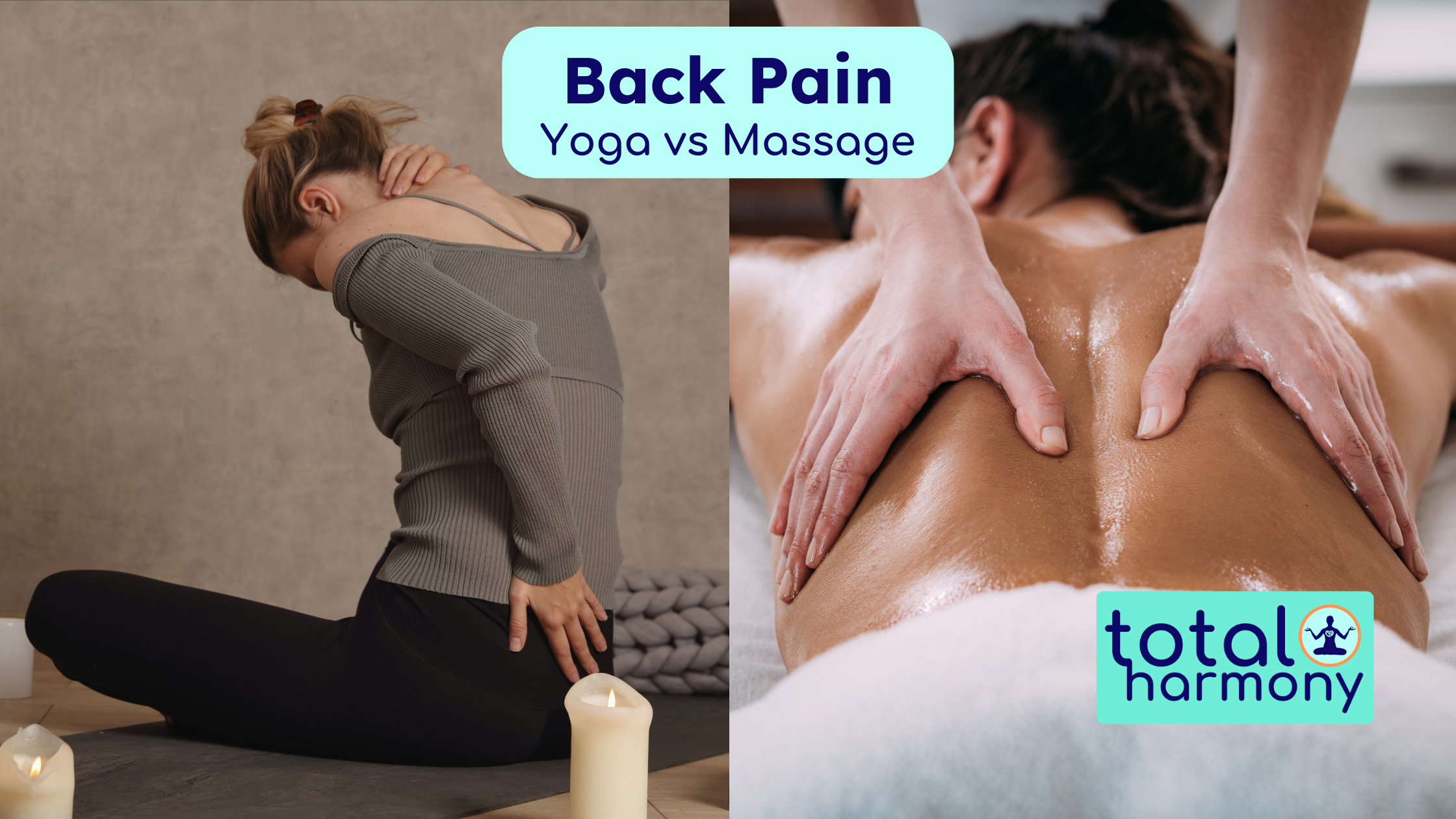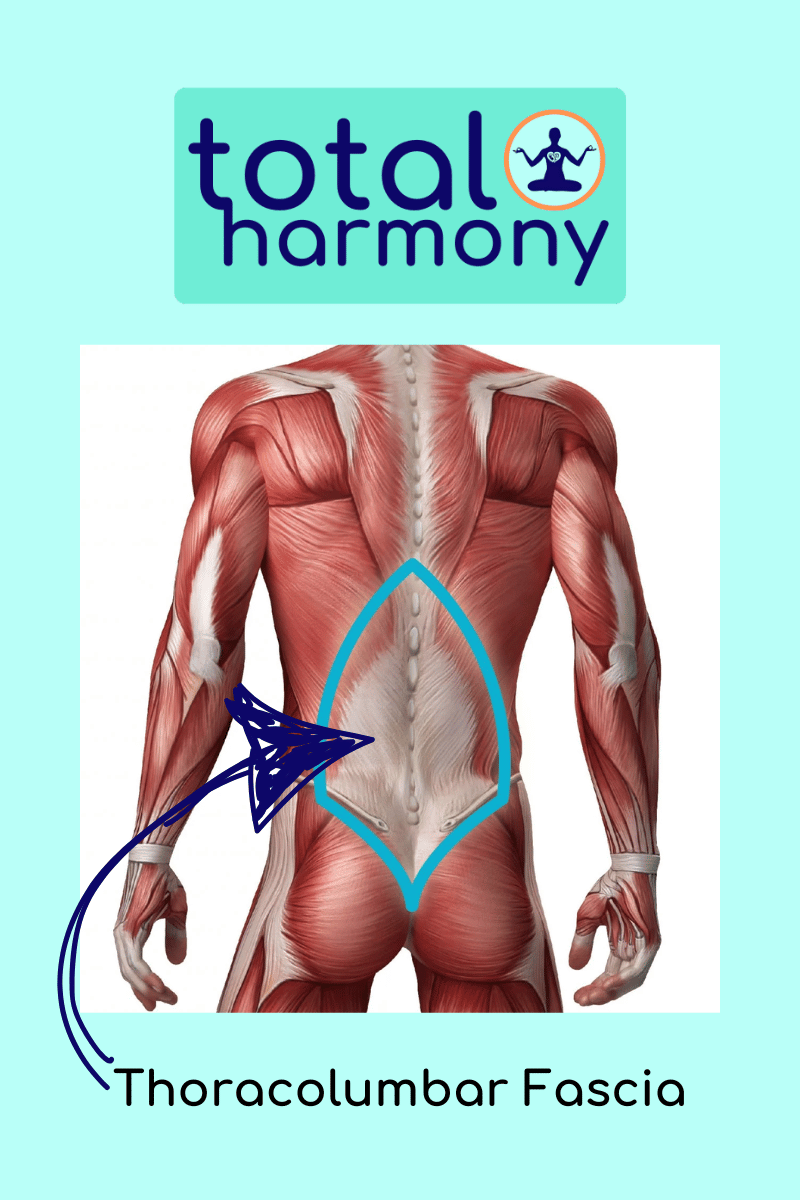Thoracic Spine Back Pain: Is Yoga or Massage Therapy Better?
 If you're dealing with thoracic spine back pain, both yoga and massage therapy offer unique benefits because they can improve function of your fascia and soft tissues. Yoga enhances flexibility and posture, supporting long-term pain management, while Thai Massage therapy provides immediate relief by targeting muscle tension. Your choice might depend on whether your pain stems from tight muscles or poor posture. Both methods emphasize safety and effectiveness, but evaluating your specific needs and lifestyle is essential.
If you're dealing with thoracic spine back pain, both yoga and massage therapy offer unique benefits because they can improve function of your fascia and soft tissues. Yoga enhances flexibility and posture, supporting long-term pain management, while Thai Massage therapy provides immediate relief by targeting muscle tension. Your choice might depend on whether your pain stems from tight muscles or poor posture. Both methods emphasize safety and effectiveness, but evaluating your specific needs and lifestyle is essential.
Key Takeaways
- Yoga enhances flexibility and strength, promoting long-term thoracic spine health and postural awareness.
- Massage therapy provides immediate relief from thoracic spine muscle tension, pain in the thoracolumbar fascia and enhances circulation.
- Yoga fosters mental relaxation, which can diminish the perception of thoracic spine pain.
- Thai Massage therapy effectively targets tight soft tissues of the thoracic and lumbar spine, improving thoracic spine mobility and reducing stiffness.
- Individual needs and preferences determine whether yoga or Thai Massage therapy is more effective for thoracic spine pain relief.
Understanding Thoracic Spine Back Pain
When you experience thoracic spine back pain, understanding the underlying causes can be your first step toward relief.
Often, this discomfort stems from issues with the thoracolumbar fascia, which plays a vital role in stabilizing your spinal joints. Poor posture is a common culprit, placing undue stress on this area, leading to muscle tightness and discomfort.
 Another factor could be an underlying condition, such as arthritis or a herniated disc, which exacerbates pain by disrupting the normal function of your thoracic spine.
Another factor could be an underlying condition, such as arthritis or a herniated disc, which exacerbates pain by disrupting the normal function of your thoracic spine.
Identifying these factors will help you take proactive measures to address the root causes effectively.
Exploring the Benefits of Yoga for Thoracic Spine Pain
Although thoracic spine pain can be challenging, incorporating yoga into your routine offers substantial benefits that can alleviate discomfort.
By gently stretching and strengthening the muscles around the thoracic spine, yoga helps reduce tension and improve flexibility. It's a safe, low-impact way to enhance your spinal health.
Studies show that yoga can complement therapeutic massage, providing a holistic approach to pain management. Poses like the cat-cow stretch or seated twists target the thoracic region, promoting better posture and reducing strain.
Practicing yoga consistently can also foster mental relaxation, further diminishing pain perception. As part of complementary therapies, yoga encourages a mindful connection with your body, empowering you to manage thoracic spine pain effectively and safely.
How Thai Massage Therapy Can Alleviate Thoracic Spine Discomfort
While yoga offers substantial benefits for thoracic and lumbar spine pain, Thai Massage Therapy provides a tactile approach that directly targets muscle tension and discomfort.
By focusing on the thoracolumbar fascia, Thai Massage therapy works to relieve pain and promote healing. Skilled practitioners use specific massage techniques to enhance circulation and reduce inflammation, ultimately alleviating discomfort in the thoracic spine.
Research indicates that massage therapy can effectively decrease muscle stiffness and improve flexibility, which are critical for maintaining spinal health.
You'll find that the hands-on approach allows therapists to pinpoint areas of tension and apply the right amount of pressure to release knots and restore balance.
This method not only provides immediate relief but also supports long-term recovery, ensuring your spine remains resilient and pain-free.
Comparing the Effectiveness of Yoga and Thai Massage Therapy
Both yoga and Thai Massage therapy offer valuable benefits for managing thoracic spine pain, but their effectiveness can vary based on individual needs and preferences.
Yoga focuses on gentle exercise and proper posture, improving flexibility and alignment. It's an excellent choice if you're looking for a preventive approach to chronic pain.
On the other hand, the massage benefits include reducing muscle tension and enhancing relaxation, which can complement physical therapy.
If you're deciding which is more effective, consider these factors:
1. Flexibility and Strength: Yoga enhances both through gentle poses.
2. Immediate Relief: Thai Massage therapy often provides quicker relief from muscle tension.
3. Long-term Management: Yoga promotes sustained well-being and postural awareness.
Evaluate your specific pain and lifestyle to determine the most effective method.
Choosing the Right Approach for Your Thoracic Spine Pain
When deciding on the best approach for managing thoracic spine pain, it's essential to take into account both your personal needs and the nature of your condition.
Consider whether your pain stems from muscle tension or poor posture. A massage therapist can target the thoracic region with techniques like myofascial release, helping to alleviate tension and improve mobility. This method is particularly effective if your discomfort is linked to tight muscles affecting your spinal cord.
Alternatively, if posture correction is a primary concern, yoga offers structured routines that enhance alignment and strength.
Both approaches aim to guarantee safety and effectiveness. Consult with professionals to determine which method aligns with your health goals and offers the most thorough relief for your specific needs.
Frequently Asked Questions
Can Diet Impact Thoracic Spine Pain Management?
Yes, your diet can greatly impact thoracic spine pain management.
Consuming anti-inflammatory foods like fruits, vegetables, and omega-3 rich fish may help reduce inflammation and pain. Avoiding processed foods and excessive sugars can also be beneficial.
Maintaining a balanced diet supports overall health and aids in weight management, reducing strain on your spine.
It's crucial to consult with a healthcare professional to tailor dietary choices for ideal pain management.
Are There Specific Yoga Poses to Avoid for Thoracic Pain?
Imagine your spine as a delicate bridge. To protect its stability, you shouldn't attempt deep backbends like Camel Pose or Wheel Pose if you're dealing with thoracic pain.
These poses can act like a storm, stressing your spine's structure. Instead, focus on gentle stretches, such as Cat-Cow or Child's Pose, which are like a calm breeze, nurturing your spine without overwhelming it.
Always listen to your body's whispers and consult a professional.
How Often Should One Receive Massage Therapy for Best Results?
When considering how often to receive Thai Massage therapy for ideal results, it's essential to personalize the frequency based on your specific needs and goals.
Generally, starting with weekly sessions can offer significant relief and improvement. Once stability is achieved, moving to bi-weekly or monthly sessions might maintain benefits.
Always consider consulting with a healthcare professional to guarantee safety and effectiveness, especially if you're managing a specific condition.
Listen to your body; it knows best.
Can Poor Posture Exacerbate Thoracic Spine Pain?
Imagine your spine as a finely tuned instrument, and poor posture is a discordant note that can amplify your thoracic spine pain.
Yes, slouching or hunching can worsen the ache, as it strains your muscles and ligaments, leading to discomfort.
Studies show maintaining good posture reduces this strain, promoting spinal health and safety.
Is Professional Guidance Necessary for Yoga Practice With Thoracolumbar Fascia Pain?
You should definitely seek professional guidance when practicing yoga with thoracic pain.
A qualified instructor guarantees you perform poses safely, preventing further injury. They tailor sessions to your needs, considering the pain's root cause and severity.
Total Harmony offers live yoga classes in studio in St. Louis, MO, as well as an easy, at-home, fully-guided relaxing yoga video subscription so you can confidently practice therapeutic yoga in the best way for you.
Evidence shows guided yoga can enhance flexibility and strength, promoting recovery.
Don't risk exacerbating your condition; professional support provides a structured, safe environment, assuring you gain yoga's benefits without compromising your health. If you feel you need evaluated by a licensed professional, schedule an appointment for a more thorough evaluation.
Conclusion
In the end, choosing between yoga and Thai Massage therapy for thoracolumbar fascia pain is like picking the right key for a lock. Both have unique benefits—yoga enhances flexibility and strength, while massage eases tension and improves circulation. Evidence suggests combining both might offer the best relief. Consider your personal preferences and needs, and perhaps consult with a healthcare professional. Tailor your approach, and you'll likely open the door to a more comfortable life.
